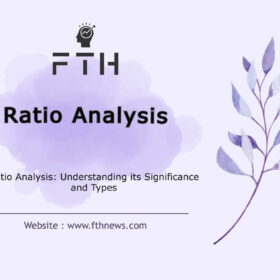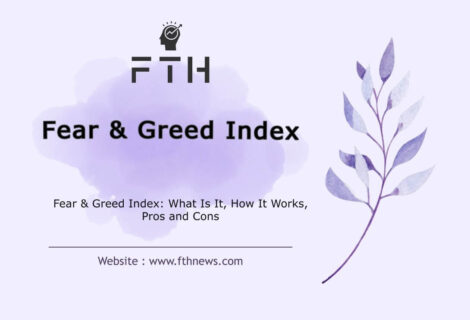
Short Selling: Understanding, Features, Examples, Pros, and Cons
Short selling is a sophisticated investment strategy that challenges traditional market wisdom. While most investors aim to buy low and sell high, short sellers seek to profit from a decline in asset prices. In this blog post, we’ll delve into the intricacies of short selling, covering key aspects such as its definition, features, advantages, disadvantages, and the regulatory measures like the step-up rule.
What is Short Selling?
Short selling is an advanced investment strategy that challenges the conventional wisdom of buying low and selling high. Unlike traditional investing, where the goal is to profit from rising asset prices, short selling is a unique approach that aims to capitalize on anticipated price declines.
In essence, short selling is a financial maneuver where investors sell an asset they don’t currently own, speculating that its value will decrease in the future. The process begins with short sellers borrowing shares of a particular asset from their brokerage firm, creating a temporary ownership arrangement. These borrowed shares are then sold on the market at the current market price, with the intention of buying them back later at a lower price.
The critical twist in short selling lies in the anticipation of a market downturn. Short sellers are essentially betting against the traditional market sentiment, hoping to profit as the asset’s price falls. Once the asset’s price has declined to the desired level, short sellers buy back the shares from the open market and return them to their broker. The profit is generated from the difference between the higher selling price and the lower repurchase price, minus any associated borrowing costs.
To employ this strategy successfully, investors need a keen understanding of market dynamics, accurately predicting or analyzing factors that might lead to a decline in the asset’s value. Seasoned investors, confident in their ability to navigate market complexities, often utilize this tactic.
The short selling process is a temporary and time-sensitive transaction, requiring the investor to repurchase and return the borrowed shares to the brokerage firm by the end of the trading day. This adds a layer of complexity compared to traditional long-term investments.
Features of a Short Sale Transaction:
Short selling, characterized by its short-term and often day-trading nature, represents a strategy that requires a distinct and contrarian approach in the world of investing. This unique method challenges the conventional mindset of buying low and selling high, introducing a dynamic where investors actively seek opportunities during market downturns.
1. Short-Term and Contrarian Nature:
Short selling is inherently a short-term strategy, often executed within a single trading day. Unlike traditional investment approaches that embrace a buy-and-hold philosophy, short selling demands quick decision-making and an ability to capitalize on short-lived market movements. Its contrarian nature sets short sellers apart, as they actively seek profit when others may be experiencing losses.
2. Thorough Fundamental and Technical Analyses:
Engaging in short selling necessitates an exhaustive analysis of both fundamental and technical aspects of the targeted asset. Fundamental analysis involves scrutinizing a company’s financial health, scrutinizing factors such as earnings reports, debt levels, and overall market conditions. Concurrently, technical analysis explores historical trading patterns, identifying potential entry and exit points for short positions. Successful short sellers meticulously assess all available information to make informed decisions.
3. Potential for Significant Profits:
Short selling, when executed correctly, offers the potential for substantial profits. By accurately predicting and capitalizing on price declines, investors can generate returns that are not limited to the traditional long strategy. Profits are derived from the difference between the higher selling price and the lower repurchase price, providing a unique avenue for investors to diversify their profit sources.
4. Substantial Risks:
Despite its profit potential, short selling comes with substantial risks that require a sophisticated understanding of financial markets. Unlike long positions, where losses are capped at the initial investment, short selling losses can theoretically be unlimited. If the asset’s price rises unexpectedly, short sellers may face mounting losses as they are obligated to buy back the borrowed shares at a higher cost.
5. Nuanced Understanding of Financial Markets:
Short selling demands more than surface-level market knowledge; it requires a nuanced understanding of the intricate dynamics that drive price movements. Investors must be attuned to broader market trends, economic indicators, and potential catalysts that could impact their targeted assets. This sophisticated comprehension empowers short sellers to navigate the complexities of market fluctuations effectively.
In essence, the features of a short sale transaction extend beyond its brief duration and contrarian approach. Successful short selling relies on a meticulous blend of in-depth analyses, risk management strategies, and a profound understanding of the ever-evolving financial landscape. Short sellers, armed with these features, are positioned to harness the potential profits while navigating the inherent risks of this distinctive investment strategy.
How to Short Sell a Stock:
Embarking on a short selling journey involves a nuanced and multifaceted process, requiring investors to navigate several key steps with precision and foresight. Below is a comprehensive guide outlining the intricacies of how to short sell a stock effectively:
1. Signing a Loan Agreement:
Before delving into short selling, investors must first sign a loan agreement with their brokerage firm. This agreement grants short-selling authorization, establishing the terms and conditions under which the investor can borrow and sell shares. Some brokerage firms may have specific criteria, such as portfolio size minimums, for granting short-selling privileges.
2. Determining Short-Selling Limits:
Following the loan agreement, investors need to ascertain the limits set by their brokerage for short selling. These limits are determined based on the shares deemed suitable by the brokerage firm and the collateralized status of the investor’s portfolio. Clear communication with the brokerage ensures a transparent understanding of the limits imposed and aids in planning subsequent short-selling activities.
3. Researching Suitable Stocks:
Thorough research is a cornerstone of successful short selling. Investors must diligently analyze potential target stocks, considering factors such as the company’s financial health, recent performance, and broader market conditions. Fundamental analysis, technical analysis, and an evaluation of macroeconomic developments play pivotal roles in identifying suitable stocks for short selling. Identifying weaknesses or impending challenges in the chosen stocks is critical for anticipating potential declines.
4. Executing the Short Sale:
Once the suitable stock has been identified, investors can proceed to execute the short sale. This can be done at the prevailing market price or at a predetermined price, depending on the investor’s strategy. The borrowed shares are sold into the market, initiating the short position. Timing is crucial, and decisive action is often required to capitalize on anticipated market movements.
5. Having an Exit Plan:
One of the cardinal rules of short selling is having a well-defined exit plan. Given the time-sensitive nature of short sales, investors must be prepared to buy back the borrowed shares and close the position by the end of the trading day. The exit plan should incorporate strategies for handling unexpected reversals in stock prices, ensuring that potential losses are managed effectively. This disciplined approach is essential for mitigating risks associated with short selling.
6. Managing Possible Reverse Positions:
Short sellers should be prepared for the possibility of market movements contradicting their initial predictions. Unlike the long-term comfort experienced in traditional buy-and-hold strategies, short selling demands vigilance and adaptability. Investors must be equipped with contingency plans to address unexpected reversals, which may involve buying back shares at higher prices to limit losses.
Navigating the complexities of short selling demands a meticulous approach at every stage of the process. From signing loan agreements to executing trades and managing potential reversals, successful short sellers exhibit a combination of strategic insight, research acumen, and risk management skills. By adhering to these steps, investors can harness the potential benefits of short selling while minimizing exposure to its inherent risks.
History of Short Selling:
Contrary to popular belief, short selling is deeply rooted in financial history and can be traced back to early market practices. The origins of short selling date back to the 1600s, with Isaac Le Maire, a prominent Dutch merchant, recognized as one of the early practitioners of this unique financial strategy. Le Maire is notably associated with short selling actions in the Amsterdam Stock Exchange during the Tulip Mania, a period of speculative frenzy around tulip bulb contracts.
Le Maire’s approach involved selling shares he did not own, anticipating a decline in their prices, and subsequently buying them back at a lower cost. His actions, considered a pioneering move in the world of finance, laid the foundation for what would later become a significant aspect of modern market dynamics.
As time progressed, short selling evolved and adapted to the changing landscape of financial markets. By the 19th century, short selling had become a more recognized and accepted practice, finding its place in established stock exchanges. However, its legitimacy and ethical considerations sparked debates, with critics arguing that it was a speculative and potentially destabilizing force in markets.
The concept of short selling gained prominence in the United States during the early 20th century, especially during the development of the securities markets. As markets matured, regulations were introduced to provide structure and mitigate risks associated with short selling. Despite occasional controversies and debates over its ethical implications, short selling became an integral part of financial markets, contributing to liquidity and price discovery.
In recent decades, short selling has faced new challenges and opportunities with the advent of digital technologies and the rise of cryptocurrencies. The cryptocurrency market, in particular, introduced additional complexities to short selling, incorporating features such as leverage and margin trading.
Best Time to Open a Short Selling Transaction:
Timing plays a pivotal role in the success of a short selling transaction, requiring careful consideration of market conditions and strategic entry points. Identifying the optimal timing can maximize potential profits and mitigate risks associated with short selling. Here are key factors to consider when determining the best time to open a short selling transaction:
1. Bear Market Conditions:
Short selling thrives in bear markets, characterized by widespread pessimism and declining asset prices. During bear markets, investor sentiment turns sour, leading to prolonged periods of downward price movements. Short sellers capitalize on these trends by anticipating further price declines and initiating short positions. Bear markets provide fertile ground for short selling opportunities, offering the potential for substantial profits as asset prices continue to deteriorate.
2. Specific Project Crises:
Short selling can be particularly lucrative during specific project crises or adverse developments affecting individual companies or industries. Events such as corporate scandals, management controversies, or regulatory challenges can trigger sharp declines in stock prices, creating ideal conditions for short selling opportunities. Short sellers analyze the fundamental weaknesses of targeted projects and capitalize on vulnerabilities that may lead to significant price downturns.
3. Confirmation from Technical Indicators:
Technical analysis plays a crucial role in confirming short selling opportunities by analyzing historical price movements and identifying patterns or indicators signaling potential market downturns. Short sellers rely on technical indicators such as moving averages, trend lines, and momentum oscillators to validate their bearish outlook and time their short selling transactions effectively. Confirmation from technical indicators provides additional confidence and enhances the precision of short selling strategies.
4. Periods of Market Decline:
Short selling is particularly attractive during periods of overall market decline, where macroeconomic factors or systemic risks contribute to widespread pessimism and uncertainty. Market downturns create an environment conducive to short selling, as investors seek to profit from anticipated price declines across multiple asset classes. Short sellers leverage these periods of market turbulence to capitalize on downward price movements and generate significant returns on their short positions.
In summary, the best time to open a short selling transaction aligns with bear market conditions, specific project crises, confirmation from technical indicators, and periods of market decline. By carefully assessing market dynamics and strategically timing short selling transactions, investors can optimize their profit potential and navigate the inherent risks associated with short selling effectively. Understanding the nuances of market timing is essential for successful short selling strategies and maximizing returns in dynamic financial markets.
Short Sale Transaction Examples:
Exploring real-world examples of short selling provides valuable insights into the mechanics and motivations behind this sophisticated investment strategy. Here are illustrative examples that shed light on how short selling works in practical scenarios:
1. Tesla Short Sale:
Consider Mr. Cem, an investor closely monitoring the American stock markets and particularly interested in Tesla and its founder, Elon Musk. When news broke about Elon Musk’s potential acquisition of Twitter, Mr. Cem harbored concerns that this development might negatively impact Tesla’s stock. Believing that Tesla’s shares could experience a decline, Mr. Cem decided to initiate a short sale on Tesla. He borrowed Tesla shares, which he did not own, and sold them in the market. Subsequently, after observing a 10% decrease in Tesla’s stock price, Mr. Cem repurchased the shares at the lower price, effectively closing his short position. In this scenario, Mr. Cem made a 10% profit on Tesla shares that he didn’t originally own, showcasing the profit potential of successful short selling strategies.
2. Amazon Layoff Announcement:
Let’s examine another example involving Mr. Ahmet, who anticipated a decline in the stock price of the technology giant Amazon. Mr. Ahmet analyzed the potential impact of Amazon’s decision to lay off employees, foreseeing that this development might lead to a decrease in the company’s stock value. Taking a bearish stance, Mr. Ahmet executed a short sale by borrowing 1000 shares of Amazon when their price was $95 each. However, the market moved unexpectedly, and the price of Amazon stock rose to $105. In this case, Mr. Ahmet faced a loss, as the cost of repurchasing the borrowed shares at a higher price exceeded the initial selling price. This example highlights the inherent risks of short selling, emphasizing the importance of strategic analysis and risk management.
3. Market-Wide Short Selling:
Short selling doesn’t only target individual stocks; it can extend to shorting the market as a whole. Some investors adopt strategies involving exchange-traded funds (ETFs) to short the market collectively. This approach involves selling short ETF shares representing broad market indices. The impact of such market-wide short selling can influence overall market dynamics, contributing to increased volatility and potential cascading effects on various securities. Monitoring short selling activities at both individual stock and market levels becomes crucial for investors and market participants.
Understanding these examples illustrates the diverse applications of short selling, from specific company-related concerns to broader market trends. Successful short sellers navigate these complexities by combining in-depth analysis, strategic timing, and risk management to capitalize on anticipated price declines. These examples emphasize the dynamic nature of short selling and the need for investors to carefully assess market conditions and company-specific factors when engaging in this intricate investment strategy.
Advantages of Short Selling:
Sophisticated investors seeking diverse strategies within their portfolios can leverage the unique advantages presented by short selling:
1. Leverage and Profit from Declining Prices:
One of the primary advantages of short selling is the ability to profit from declining prices. While traditional long positions rely on buying low and selling high, short sellers can capitalize on falling asset prices. This introduces a valuable avenue for investors to generate returns, especially during bear markets or specific downtrends in individual stocks. The leverage inherent in short selling amplifies the profit potential by allowing investors to control larger positions with a smaller upfront investment.
2. Risk Management and Portfolio Diversification:
Short selling serves as a risk management tool within an investment portfolio. By incorporating short positions, investors can offset potential losses from their existing long positions. This hedging strategy becomes particularly useful during periods of market uncertainty or when specific risks are anticipated. Short selling allows investors to maintain a balanced portfolio by profiting from both upward and downward price movements, contributing to overall risk mitigation.
Disadvantages of Short Selling:
While short selling offers distinct advantages, it comes with inherent risks and challenges that investors must carefully navigate:
1. Historical Bias Toward Rising Stock Prices:
One significant disadvantage stems from historical market trends that generally favor rising stock prices over the long term. While short selling allows investors to profit from market declines, the prevailing upward bias in stock prices means that short sellers are swimming against the tide. This requires a keen understanding of market dynamics and the ability to accurately identify opportune moments for short selling, as markets tend to have prolonged upward trends.
2. Additional Costs and Borrowing Fees:
Engaging in short selling involves additional costs that can impact the overall profitability of the strategy. Investors must pay fees for borrowing shares, adding an extra layer of expenses to the transaction. These borrowing fees contribute to the overall cost of executing a short sale and can erode potential profits. Additionally, transaction costs, including commissions and other fees, further reduce the net returns from short selling. Investors must carefully consider these costs when evaluating the viability of short selling strategies.
Understanding both the advantages and disadvantages of short selling is essential for investors looking to incorporate this strategy into their overall investment approach. While the potential for profit exists, it is crucial to navigate the complexities and risks associated with short selling effectively, making informed decisions that align with broader portfolio objectives.
What is the Short Selling Ban and Why is it Applied?
Regulators implement short selling bans as regulatory measures to address specific concerns related to market manipulation, excessive volatility, and the preservation of market stability.. Understanding the rationale behind these bans and their implications is crucial for investors and market participants:
1. Curbing Market Manipulation:
One of the primary reasons for implementing a short selling ban is to curb potential market manipulation. Short selling involves selling an asset without owning it, with the anticipation that its price will decrease. In certain situations, market participants may exploit this strategy to intentionally drive down the prices of specific securities, leading to distorted market dynamics. Short selling bans act as a preventive measure to restrict the ability of investors to engage in activities that could manipulate stock prices for their gain.
2. Maintaining Market Order During Low Liquidity: .
Short selling bans are often applied during periods of low liquidity in the market. Low liquidity can exacerbate the impact of short selling, leading to heightened volatility and potential disruptions. By restricting or temporarily prohibiting short selling, regulators aim to maintain orderly market conditions, preventing sudden and severe price movements that could be detrimental to market integrity. This is particularly important during economic downturns or crisis periods when market participants may be more susceptible to panic-driven actions.
3. Limiting Investor Losses During Downturns:
Short selling bans may be implemented to limit investor losses during significant market downturns. In times of crisis, such as financial panics or economic recessions, rapid declines in asset prices can trigger a cascade of selling. Short selling bans act as a circuit breaker, limiting the ability of investors to exacerbate the downward pressure on asset prices. This helps stabilize markets and instills confidence among investors, preventing a self-reinforcing cycle of panic selling.
4. Safeguarding Investor Confidence:
Maintaining investor confidence is a paramount goal for regulators. Short selling bans contribute to this objective by preventing actions that could erode trust in the financial markets. Excessive short selling, especially during turbulent periods, can create an atmosphere of uncertainty and fear. By imposing bans, regulators aim to reassure investors and demonstrate a commitment to fostering fair and transparent market conditions.
5. Temporary Nature and Periodic Review:
Regulators typically implement short selling bans for a defined period and periodically review them. They assess market conditions and the effectiveness of the ban, adjusting their approach as needed. This allows for a balanced approach, ensuring that they lift the restrictions when market conditions stabilize, and normal market functioning can resume.
In summary, short selling bans are applied to address specific challenges related to market manipulation, volatility, and investor confidence. While these measures are temporary and subject to review, they play a crucial role in safeguarding the stability and integrity of financial markets during challenging periods. Investors should stay informed about regulatory decisions and understand the motivations behind short sell bans to navigate market conditions effectively.
The Step-Up Rule in Short Selling:
Commonly referred to as the “Uptick Rule,” the step-up rule is a regulatory provision designed to influence the timing and execution of short sales in financial markets.Understanding the intricacies of this rule provides insights into its role in maintaining market stability and influencing investor behavior:
1. Preventing Excessive Downward Momentum:
The primary objective of the step-up rule is to prevent excessive downward momentum in security prices. This is achieved by imposing a restriction on the execution of short sales. According to the rule, a short sale must occur at a price higher than the previous transaction. By mandating that short sellers can only execute their trades when the price is ticking upward, the rule aims to slow down or impede the rapid decline of security prices. This mechanism promotes market stability and prevents a cascading effect of aggressive selling that could lead to disorderly market conditions.
2. Promoting Market Stability:
Market stability is a crucial consideration for regulators, and the step-up rule plays a pivotal role in achieving this goal. By preventing short sellers from contributing to a rapid and uninterrupted decline in security prices, the rule helps maintain a balanced and orderly market environment. It acts as a circuit breaker, mitigating the impact of aggressive selling strategies that could otherwise lead to panic among investors and exacerbate market downturns.
3. Limiting Losses for Investors:
The step-up rule can limit losses for investors by introducing a degree of control over the pace of price declines. When short sales are subject to the requirement of occurring at a higher price than the previous transaction, it provides a buffer against the freefall of security prices. This limitation on the speed of downward movements allows investors to manage their positions more effectively and may prevent the rapid erosion of portfolio values during challenging market conditions.
4. Impact on Liquidity:
While the step-up rule serves a crucial role in market stability, it may also have implications for liquidity. By restricting the execution of short sales to instances where the price is moving upward, the rule could potentially reduce liquidity, especially during periods of market stress. Investors may face challenges in executing short sales promptly, and this could influence overall market dynamics. Balancing the objectives of market stability and maintaining adequate liquidity remains a key consideration in the implementation and evaluation of the step-up rule.
In summary, regulators designed the step-up rule, also known as the Uptick Rule, as a regulatory measure to influence short sell dynamics with the aim of maintaining market stability. By preventing excessive downward momentum and introducing constraints on the execution of short sales, the rule aims to strike a balance between allowing legitimate trading activities and preventing potential market abuses. Investors should be aware of the impact of such rules on market behavior and adapt their strategies accordingly to navigate the complexities of dynamic financial markets.
How Does the Step-Up Rule Affect Stock Prices?
The application of the step-up rule in short sell has nuanced effects on stock prices, shaping market dynamics and influencing investor behavior. Understanding these impacts provides valuable insights into the role of the step-up rule in the broader context of financial markets:
1. Maintaining Market Order and Reducing Fluctuations:
One of the primary effects of the step-up rule is its contribution to maintaining market order and reducing price fluctuations. By requiring short sales to occur at a higher price than the previous transaction, the rule introduces a level of restraint on the pace of downward movements in stock prices. This restraint helps prevent excessive volatility and sudden disruptions in the market. Investors benefit from a more controlled and orderly environment, fostering confidence in the stability of asset prices.
2. Restricting Selling Pressure on Certain Assets:
The step-up rule acts as a restraint on investors looking to engage in rapid short sell of specific assets. This restriction limits the selling pressure on those assets, preventing a scenario where aggressive short sell contributes to a substantial and uninterrupted decline in prices. This targeted restriction helps safeguard the value of certain securities and prevents potential market abuses that could arise from unchecked downward momentum.
3. Potential Decrease in Volatility:
As a consequence of limiting the speed and intensity of short sell, the step-up rule has the potential to decrease overall market volatility. Investors may experience less abrupt and extreme price movements, creating a more predictable trading environment. Reduced volatility is particularly beneficial during times of economic uncertainty or market stress, as it minimizes the likelihood of panic-driven sell-offs and contributes to a more stable investment landscape.
4. Impact on Liquidity:
While the step-up rule serves to maintain order and reduce fluctuations, it may also impact market liquidity. The restriction on short sales, particularly during declining market conditions, can lead to decreased liquidity as investors face constraints in executing certain transactions. Reduced liquidity may result in challenges for investors seeking to buy or sell assets promptly, potentially influencing prices in unforeseen ways. Striking a balance between market stability and maintaining adequate liquidity remains a complex challenge for regulators implementing and reviewing the step-up rule.
5. Consideration of Macro-Economic Factors:
Consider broader macroeconomic factors in conjunction with the effects of the step-up rule on stock prices. Economic conditions, geopolitical events, and systemic risks can interact with the rule to influence market outcomes. Investors should analyze these factors alongside the application of the step-up rule to make informed decisions and navigate the evolving landscape of financial markets.
In summary, the step-up rule in short selling influences stock prices by maintaining market order, reducing fluctuations, and restricting selling pressure on certain assets. While it aims to enhance stability, its impact on liquidity and interactions with broader economic factors highlight the complexities involved in regulating market behavior. Investors should stay vigilant, understanding the interplay between regulatory measures and market conditions to make strategic decisions aligned with their investment objectives.
Can You Short Sell ETFs?
Yes, it is possible to short sell ETFs (Exchange-Traded Funds). Short selling an ETF involves borrowing shares of the ETF from a broker and selling them with the expectation that the ETF’s price will decline. Later, the short seller aims to buy back the ETF shares at a lower price to return them to the lender, profiting from the price difference.
Conclusion:
Mastering short selling is not only about understanding the mechanics but also navigating the complexities and risks involved. Investors should approach short selling with caution, conducting thorough analyses and staying informed about market regulations. By doing so, they can leverage this strategy effectively in their investment portfolios.
FAQ
Short selling involves borrowing and selling an asset with the expectation that its price will decrease. The investor aims to buy it back later at a lower price, making a profit from the difference.
Yes, short selling is legal, but it must comply with regulations. Stock exchanges and regulators oversee and set rules for short selling activities.
Selling short for beginners involves selling borrowed assets with the anticipation of buying them back at a lower price, profiting from a decline in value.
No, short selling is not illegal. However, it must be done in accordance with regulations, and certain restrictions may apply.
Short selling is difficult because it requires predicting price declines accurately. Markets often have an upward bias, making successful shorting challenging.
The amount required for short selling depends on the value of the shares being borrowed. Investors typically need enough capital to cover potential losses if the trade goes against them














